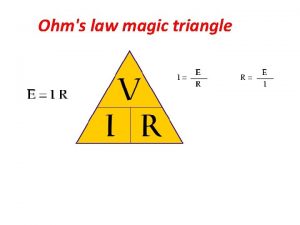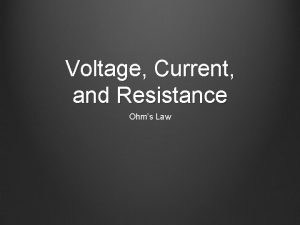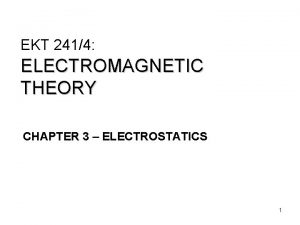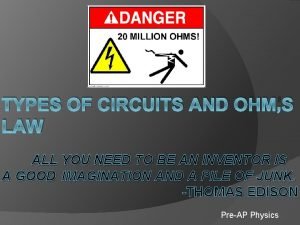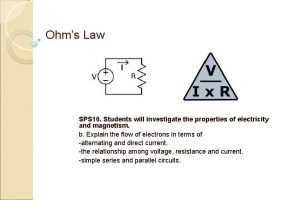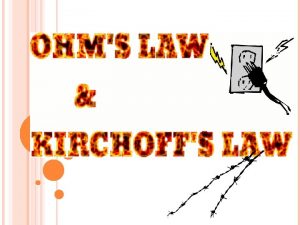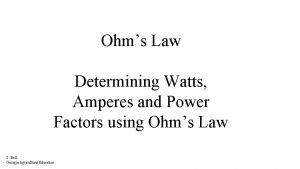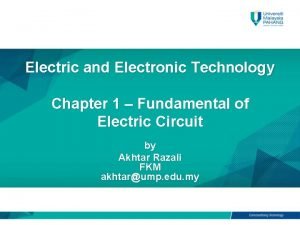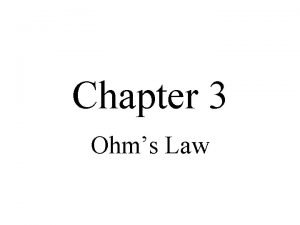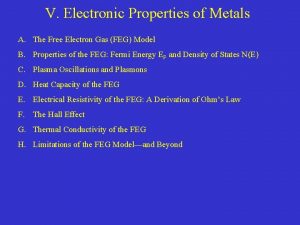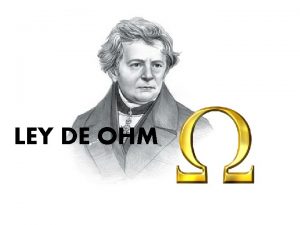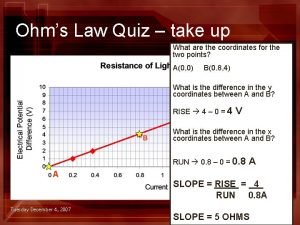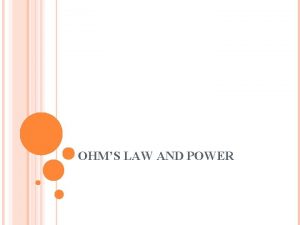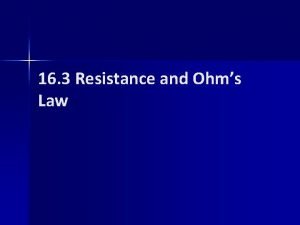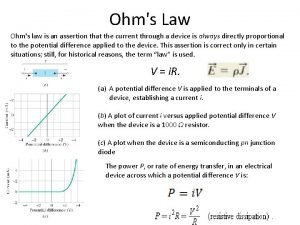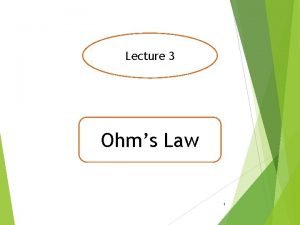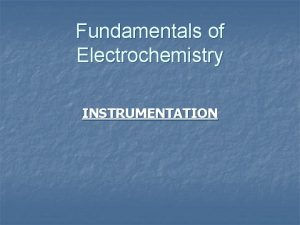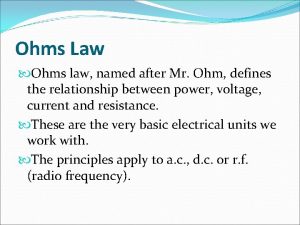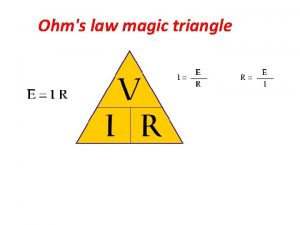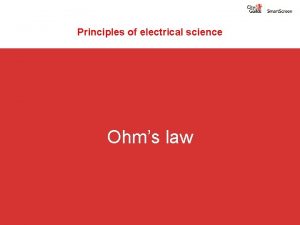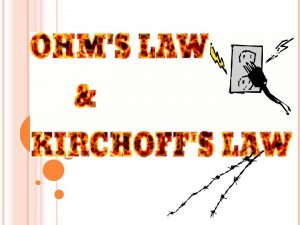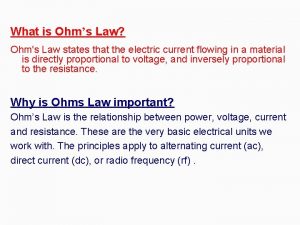This Hour Potentiometers Ohms Law Continued Power Energy
















- Slides: 16

This Hour • Potentiometers • Ohm’s Law Continued • Power & Energy EGR 101 1

Review • How is voltage related to charge and energy? • What is the formula for resistance? • What is Ohm’s Law? • What does it mean? EGR 101 2

Potentiometers • A potentiometer is a variable resistor • The total resistance is fixed between terminals A and B A • A portion of the resistance is between A and C C • The remainder is between B and C B • C can be physically moved between A and B EGR 101 3

2 Basic Ways to Use Potentiometers • As a variable resistor: – The center tap (C) is connected to one end (B) – The total resistance is only from A to C A B/C • As a voltage divider (to be covered in a later lecture) EGR 101 4

In-Class Activity If you have a 1 k Ω potentiometer and the center tap, C, is set ¼ of the way between A and B (closer to A), • What is the resistance between A and C and between B and C? • What is the resistance R if the potentiometer is connected as below (assume C has not been moved): EGR 101 5

Relationship between Current and Voltage • Current through a FIXED resistance – Increases when the voltage increases – Decreases when the voltage decreases • The current changes as a result of the change in voltage! + + _ _ What is the value of the resistance? EGR 101 6

Relationship between Current and Resistance • For a FIXED voltage, – The current decreases proportionally to an increase in resistance – The current increases proportionally to a decrease in resistance • The current changes as a result of the change in resistance + + _ _ EGR 101 7

In-Class Activities 1. What is the effective resistance of each potentiometer in these circuits? + 5 V A R 1 C _ + 10 V A C R 2 _ B B 2. If R 1 and R 2 actually were the same potentiometer set to different values and R 2 corresponds to C adjusted all the way to the B end (i. e. total resistance value), what percentage of the total resistance is R 1? EGR 101 8

Energy • Think of a battery like sand in an hour glass – Sand = charge • Voltage is the force that moves charge – Think of gravity on the moon vs the Earth • Energy = V. Q – You use much more energy to move sand on Earth than on the moon where gravity is 1/6 th the Earth’s EGR 101 9

Power & Energy • The Instantaneous Power, P, is the Change of Energy, E, per unit time. – In our sand analogy, power is a measure of how quickly the hourglass is emptying • Units: [E] = Joules (J). [t] = seconds (s). EGR 101 10

Power & Energy The change in energy can be written as: We often assume initial energy is zero EGR 101 11

Power in terms of Voltage and Current Previously you learned that or Using this and or yields Since then EGR 101 12

Power - The amount of energy used per unit time - The battery shown below uses 1 J/s to generate current – it has used 1 W of power. EGR 101 13

Determining Power EGR 101 14

Other Power Equations In this example, P= EGR 101 15

Other Power Equations (continued) In this example, P= EGR 101 16
 Volt amp ohm triangle
Volt amp ohm triangle Ohm law
Ohm law Point form of ohms law
Point form of ohms law Types of circuits and ohm's law ch 7.1 answers
Types of circuits and ohm's law ch 7.1 answers Ohms law resistance
Ohms law resistance The ohm's law states that
The ohm's law states that Ohms law circle
Ohms law circle Ohms law emf
Ohms law emf Kirchoffs current law
Kirchoffs current law Ohms law introduction
Ohms law introduction Circuits-current worksheet answers
Circuits-current worksheet answers A certain light bulb
A certain light bulb Ohms law derivation
Ohms law derivation Georg simon ohm
Georg simon ohm Ohms law quiz
Ohms law quiz 24hr time
24hr time Clock hour to credit hour conversion
Clock hour to credit hour conversion
